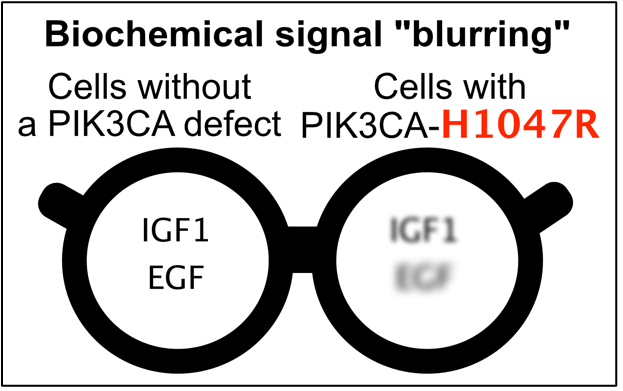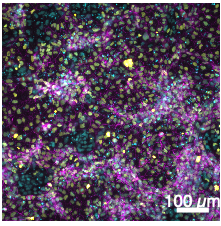Written by: Ralitsa Madsen
At the time of writing this newsletter for CLOVES Syndrome Community (CSC), I realise that 29 February is just around the corner (24h and 15 minutes to go!). This is a special date for CSC and the entire rare disease community. It is this year’s worldwide Rare Disease Day – a day “for raising awareness and generating change for the 300 million people worldwide living with a rare disease, their families and carers”. Yet, it is also a day to celebrate the fact that, collectively, the rare disease community is not rare – it is Rare As One (this is also the name given to a Chan Zuckerberg Initiative that is committed to uniting the rare disease community in their quest for cures). On the back of this realisation, it seemed appropriate to dedicate this newsletter to team work. The reasons are several, but the bottom line is the same: a collective, collaborative approach paves the way for success. Isn’t CSC a great example of that? Let me give you a few more.
Almost a year ago, I had the privilege of opening my own research laboratory within the University of Dundee (Scotland) and one of the world’s best centres (MRC PPU) for research on molecules known as kinases and their role in human disease. The technical jargon is not important other than saying that the PIK3CA gene, which you are all intimately familiar with, gives rise to a molecule that classifies as a kinase. This molecule is key to accurate cell communication. It is the molecule that carries a relatively simple molecular defect with otherwise profound consequences for people with CLOVES. You may also have heard about another molecule known as AKT, a partner in crime for the kinase encoded by PIK3CA. Yet another, seemingly simple defect in AKT can give rise to a rare disease known as Proteus syndrome, with similarities to CLOVES (and the wider group of PROS disorders). I mention this because much of what we know about AKT, and indeed the wider molecular circuit controlled by it and the PIK3CA kinase, was discovered right here in Dundee, at the MRC PPU which I now call my home. The secret behind the success of this amazing group of researchers has been and continues to be: team work and focus on quality over quantity.
From day one of starting my own research group, I have sought to embed the very same values in all we do. I have been incredibly lucky to recruit a fantastic student, Oliwia Mruk, who joined my laboratory as a summer student, then an honours student and, moving forward, a PhD student. Oliwia is dedicated to and passionate about PIK3CA-focused research of relevance to CLOVES and PROS more generally; stay tuned, you will hear more of her in the future. Together, we completed work that I had started at UCL Cancer Institute prior to moving to Dundee; this work is now publicly available but may be too technical for a quick read. In a nutshell, we have discovered that the PIK3CA-H1047R defect commonly found in CLOVES/PROS can lead to “blurred” signal perception. In other words, cells are no longer able to distinguish different types of signals such as specific hormones or factors that control growth. An analogy that I have been using a lot to convey the key message is one of blurred vision, as shown below.

This discovery originated in what one would term “blue-sky” research, yet it forms the basis for the larger research programme that now defines the focus of my team. So far, we have only scratched the surface when it comes to a detailed understanding of the origins and consequences of this signal blurring. Does it apply to other PIK3CA defects beyond H1047R? To what extent is it determined by the identity of the cell that harbours the PIK3CA defect? How does this blurring happen in the first place? If we can answer these questions, we hope that we can help to develop better, less toxic treatments for CLOVES/PROS and other diseases featuring aberrant PIK3CA function. To achieve this, we are fortunate to collaborate with biochemists, clinicians, drug developers, all the way to mathematicians and physicist. The latter can help us with the building of actual quantitative, computer models of systems with aberrant PIK3CA. In the future, we hope that such models can be used to guide precision medicine decisions. It is exciting, but it is also important to stress that this will not happen tomorrow. It will take a lot of time, money and very hard team work.
Individuals with CLOVES know better than anybody else how diverse the consequences of a genetic PIK3CA defect can be, especially when the defect itself is somewhat randomly distributed in some cells but not others. Ever since my PhD with Prof Robert Semple, who co-discovered PROS, it has been clear to me that progress in this space will require careful attention to the many cell types that can be affected by PIK3CA defects. I have therefore teamed up with Prof Semple again, along with Prof Liz Patton and Dr Hannah Brunsdon at Edinburgh University (Scotland), on a project that seeks to make more robust and faithful experimental model systems of CLOVES/PROS. We are harnessing the power of zebrafish and so-called human induced pluripotent stem cells to look at a variety of different cell types and the nitty gritty details of their responses to a PIK3CA defect. I am particularly excited to share some recent advances arising from work done in my group in collaboration with Prof Semple, with support from CSC funding. After several rounds of trial-and-error, we have finally succeeded in making blood vessel cells in a dish, starting from human induced pluripotent stem cells with and without PIK3CA defects. This is giving us an unlimited source of material to use for further studies of PIK3CA defects and relevant treatment testing in these particular cells. It is incredible to watch this cell conversion take place in a dish under the microscope. We can even make the blood vessel cells behave more like those found in arteries or veins. This is important given the high prevalence of venous malformations in CLOVES and other PROS subtypes. We can use various dyes to highlight features of the cells we have made, which gives us rather lovely pictures to look at in the end (have a look below for an image that I captured recently).

As I return to the laboratory bench, I hope that this little update gives you confidence in our continued efforts to make a difference for the wider CLOVES/PROS community. We could not have done it without the unwavering support provided by CSC, particularly Kristen Davis who will be missed tremendously when she steps down this year. That said, I am also excited to welcome and work together with the new CSC Director. To be part of the wider CSC team effort is a privilege and inspiration all at once. Thank you for that.

